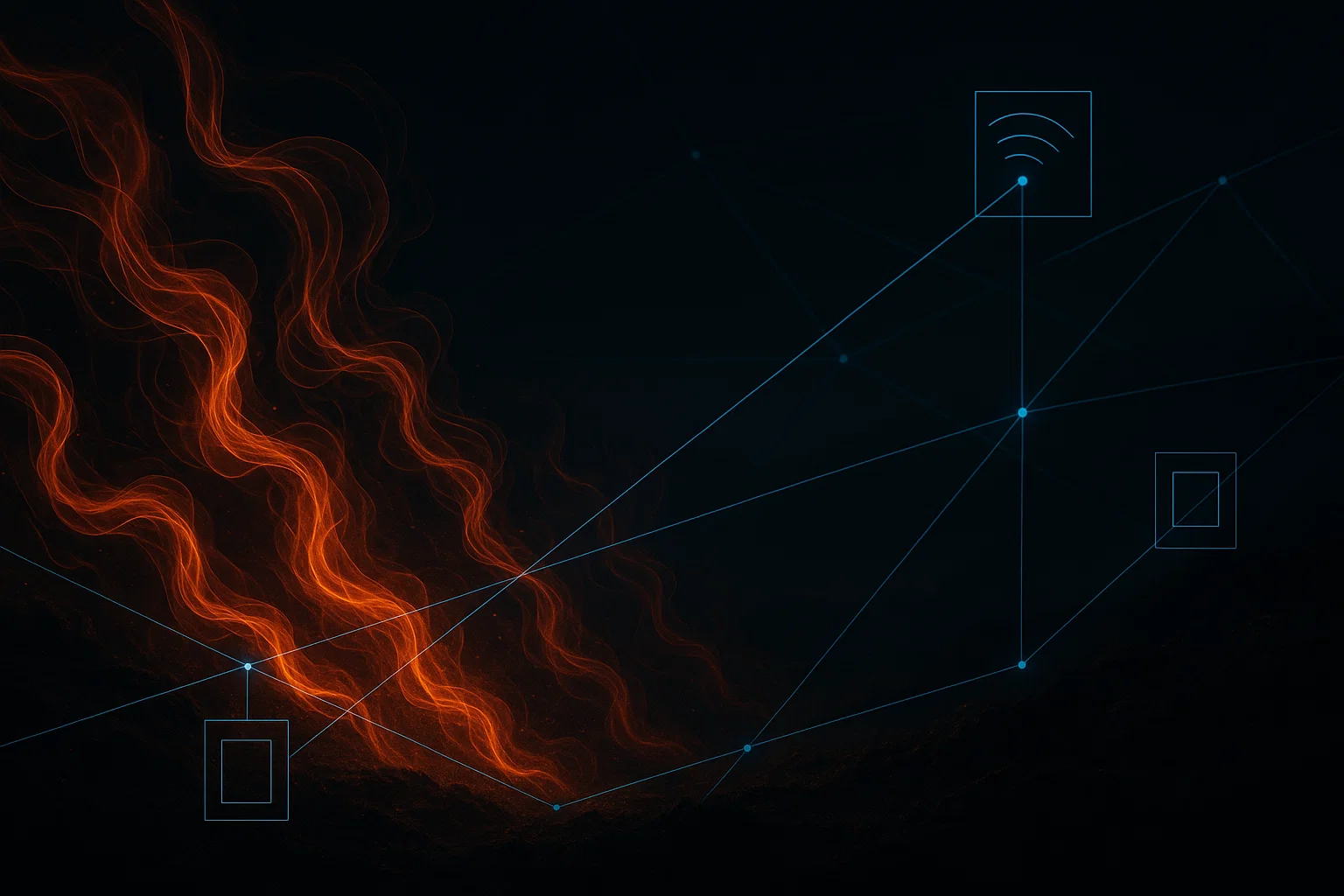
SmokeNet
A system that watches the horizon.
Why SmokeNet?
The Problem is Growing
Wildfires are becoming more frequent, intense, and destructive. In 2023 alone, over 2.6 million acres burned in the U.S., causing billions in damages and displacing thousands. Globally, wildfires release more carbon dioxide than all annual traffic emissions combined: fueling climate change and creating a dangerous feedback loop. Yet traditional detection methods, like satellites, often spot fires hours after ignition, when it's already too late.
Real-Time Early Detection
Every minute matters. The sooner a fire is detected, the more likely it can be contained. SmokeNet detects smoke in its earliest visible stages, giving responders a critical head start.
Built for Real-World Deployment
Built for real-world deployment, SmokeNet runs without internet, without grid power, and without ideal conditions. Its lightweight, distilled, quantized, and optimized machine learning model operates directly on-device, making fast and reliable decisions in remote, high-risk environments where surveillance is otherwise impossible.
Smart Enough to Know the Difference
Trained on real-world wildfire data, SmokeNet can distinguish true smoke from visual lookalikes like fog, dust, clouds, and lens flare, minimizing false positives and unnecessary dispatches.
Immediate, Intelligent Alerts
Once smoke is detected, SmokeNet sends an alert within seconds, using low-power, long-range LoRa radios to relay messages across disconnected terrain, reaching emergency responders without needing cellular or satellite connectivity.
Model Transformation Pipeline
Heavyweight Learner
Massive neural network processes thousands of wildfire images to learn detection patterns.
Knowledge Distilled
Intelligence compressed and refined into a lightweight model that retains the essence.
Field Deployed
Compact model runs on solar-powered hardware, watching the forest horizon for smoke.
fire detection accuracy
model size
smaller
deployable